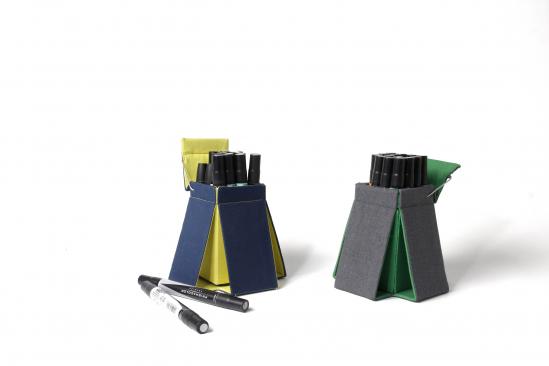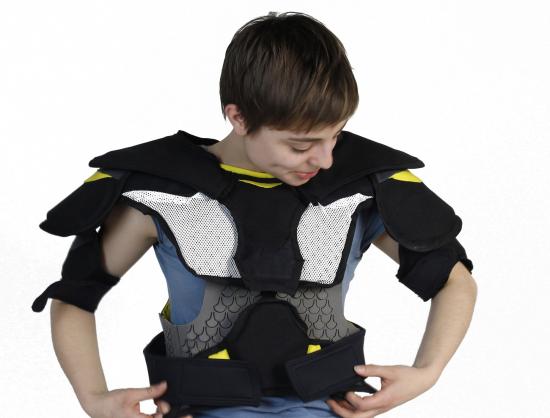
Joy Woojin Chung / Pratt Institute
2014 IDSA Northeast District Conference Student Merit Winner
The pursuit of delight is a common goal for many designers. For the aptly named Joy W. Chung, delight describes both her approach to design and the outcomes of her work.
As a child in South Korea, Chung discovered LEGO—which served as a literal revelation of a career path. “I was around seven when my mom bought me a set of LEGOs,” she remembered. “I was into creating my own story.”
When she came to the United States to study at Pratt, Chung’s experience with those building blocks would form the foundation of her choice to study industrial design. “After coming to Pratt as an ‘Undecided’ major, I realized I liked looking at objects that are three-dimensional and seeing relationships between them.”
At Pratt, Chung took some classes with Professor Ben Hopson, a widely-recognized proponent of kinetic design practice, which is described by Hopson as “the aesthetic design of physical movement.” Chung noted, “From forms that move and change, I see an element of surprise, which is always delightful. Whether it’s shoes, toys, day-to-day products, I enjoy designing things with some kind of movement involved.”

Among the projects she designed for Hopson’s classes, one stands out for its natural playfulness, the Plié Kinetic Marker Case. At a glance, the marker case appears to be an ordinary, upstanding rectangular receptacle. But with a simple yank to the sides of the case, the markers it conceals leap into view ready to be used.
“Without a set product in mind, I explored movements that were playful to interact with,” she recalled. “Then, I tried to apply it to a practical product. When closed, the form is rather compact, but when open, the four legs gave stability, which I thought would be suitable as a marker case.”
Movement, stability and playfulness all combine to form the meta-constraint that shaped the project of which Chung is most proud: protective gear for sledge hockey players.
In sledge hockey, the average participant has lost a limb or suffers from paralysis and requires the use of a small sled in place of ice skates. With the limited abilities of many sledge hockey competitors and the speed of the sport, designing protective gear that is equally effective and usable is exceptionally difficult.

Chung, a long-time figure skater who migrated to ice hockey in her teenage years, embraced the opportunity to help others participate in a form of the sport she loves.
“As a figure skater, I liked going to the rink for the smell and the coolness of it,” she noted. “When I was 16, my cousin brought me to her hockey game, and that was when I first put on a hockey skate. Hockey is a very minor sport back in my home country. There are no teams at school, so I played on a men’s amateur team.”
Chung continued, “As a hockey player myself, I was excited to help other sports enthusiasts. I had an opportunity to interview the athletes and play with them.”
During her first-person research, Chung learned players had adapted their play based on what existing protective gear would allow them to do, and they weren’t necessarily aware of how limited their game play was. “Until I prototyped a persuasive design, they didn’t realize what could be done,” she recalled.
Responding to the protective equipment’s twin needs to have a wide range of movement and to be highly customizable, Chung drew inspiration from the iconic covers worn by samurai. “During research, I realized that samurai have made a similar kind of study,” she offered. “They had to be protected from attacks, but able to move without restriction. And the protective gear also represented a certain pride of skill and status. So aesthetics, function and safety all came together.”
With internships in the Creature Shop at the Jim Henson Company and at Manuel Saez Partners, Chung has accumulated a good variety of proto-professional experience. “I’ve learned to play in teams and how to communicate with the different people on the teams,” she noted.
That experience working within different design teams has helped inform a dream of hers. Chung shared, “In the long term, I would like to make a team that could travel around the world helping people in need and stimulating kids to become more creative people.”
To see more of Joy Woojin Chung’s work, visit: